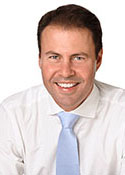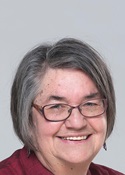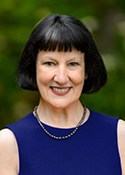Kooyong
Margin: Liberal 11.1%
Region: Eastern Melbourne, Victoria
In a nutshell: It doesn’t get any more blue-ribbon than the seat formerly held by Bob Menzies, which has been unblemished by Labor representation since federation.
Candidates in ballot paper order

|
HELEN McLEOD JOSH FRYDENBERG MARG D’ARCY ANGELINA ZUBAC |
Presently covering Melbourne’s affluent inner east from Kew and Hawthorn east to Balwyn North and Camberwell, Kooyong has been held by the prevailing conservative forces of the time without interruption since federation, most famously being held by Robert Menzies from 1934 to 1966. Conservative independent John Latham gained the seat from the Nationalist Party in 1922 running in opposition to the prime ministership of Billy Hughes, and with that end accomplished joined the party the following of the year. He went on to lead it after the election defeat of 1929, in which Stanley Bruce lost his seat of Flinders as well as the prime ministership. However, the defeat of the Labor government two years later was achieved when Joseph Lyons led Labor defectors into a merger with conservative forces as the United Australia Party, with Latham agreeing to serve as Lyons’s deputy. Latham served as Attorney-General and External Affairs Minister in the Lyons government from 1931 until his retirement at the 1934 election, and a year later was appointed Chief Justice of the High Court.
Latham was succeeded as both member for Kooyong and Attorney-General was Robert Menzies, who had been a state parliamentarian since 1928 and Deputy Premier since 1932. Menzies ascended to the prime minister after Joseph Lyons’ death in April 1939, serving for two years as the nation’s wartime leader before resigning in August 1941 after losing the support of his cabinet colleagues. Following Labor’s landslide win at the 1943 election, Menzies returned to the leadership of the United Australia Party which had been held in the interim by Billy Hughes, and brought fragmented conservative forces together a year later under the new banner of the Liberal Party. Two elections later he led the party to a resounding victory, commencing an epic 16-year tenure as prime minister from December 1949 until his retirement in January 1966.
Menzies was succeeded in Kooyong at an April 1966 by-election by Andrew Peacock, who went on to serve as a senior minister in Malcolm Fraser’s government from 1975 until April 1981, when he unsuccessfully challenged Fraser for the leadership. He briefly returned to the ministry from November 1982 until the election defeat the following March, after which he defeated John Howard in the ballot for the party leadership. Despite leading the party to an honourable defeat at the December 1984 election, he was obliged to surrender the leadership the following September after a bungled attempt to force Howard out as deputy. A party room coup returned him to the leadership in May 1989, but he failed to win the March 1990 election despite securing for the Coalition a narrow majority of the two-party preferred vote. He then relinquished the leadership to John Hewson, and served in the shadow ministry until his retirement from politics in November 1994.
The seat’s next member for Petro Georgiou, who as member for so prestigious a seat was generally assumed to have a career as a heavy-hitter ahead of him. However, he instead emerged as a permanent back-bencher and a thorn in the side of the Howard government, particularly in relation to his liberal views on asylum seekers. Georgiou retired at the 2010 election and was succeeded by Josh Frydenberg, a banker and former adviser to Alexander Downer and John Howard who had earlier challenged Georgiou for preselection in 2007. Frydenberg won the 2010 preselection with the backing of the Michael Kroger faction, while rivals associated with the then state Opposition Leader Ted Baillieu initially backed John Roskam, the director of the Institute of Public Affairs. However, Roskam declined to run and instead threw his weight behind industrial relations lawyer John Pesutto, whom Frydenberg defeated in the final round by 283 votes to 239.
Frydenberg has progressed from parliamentary secretary to outer ministry to cabinet status through the course of the present term, attaining the positions of Assistant Treasurer in December 2014 and Minister for Resources, Energy and Northern Australia in February 2016, despite his public support for Tony Abbott in Malcolm Turnbull’s September 2013 leadership challenge.
Analysis by William Bowe. Read William’s blog, The Poll Bludger.


